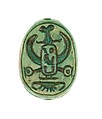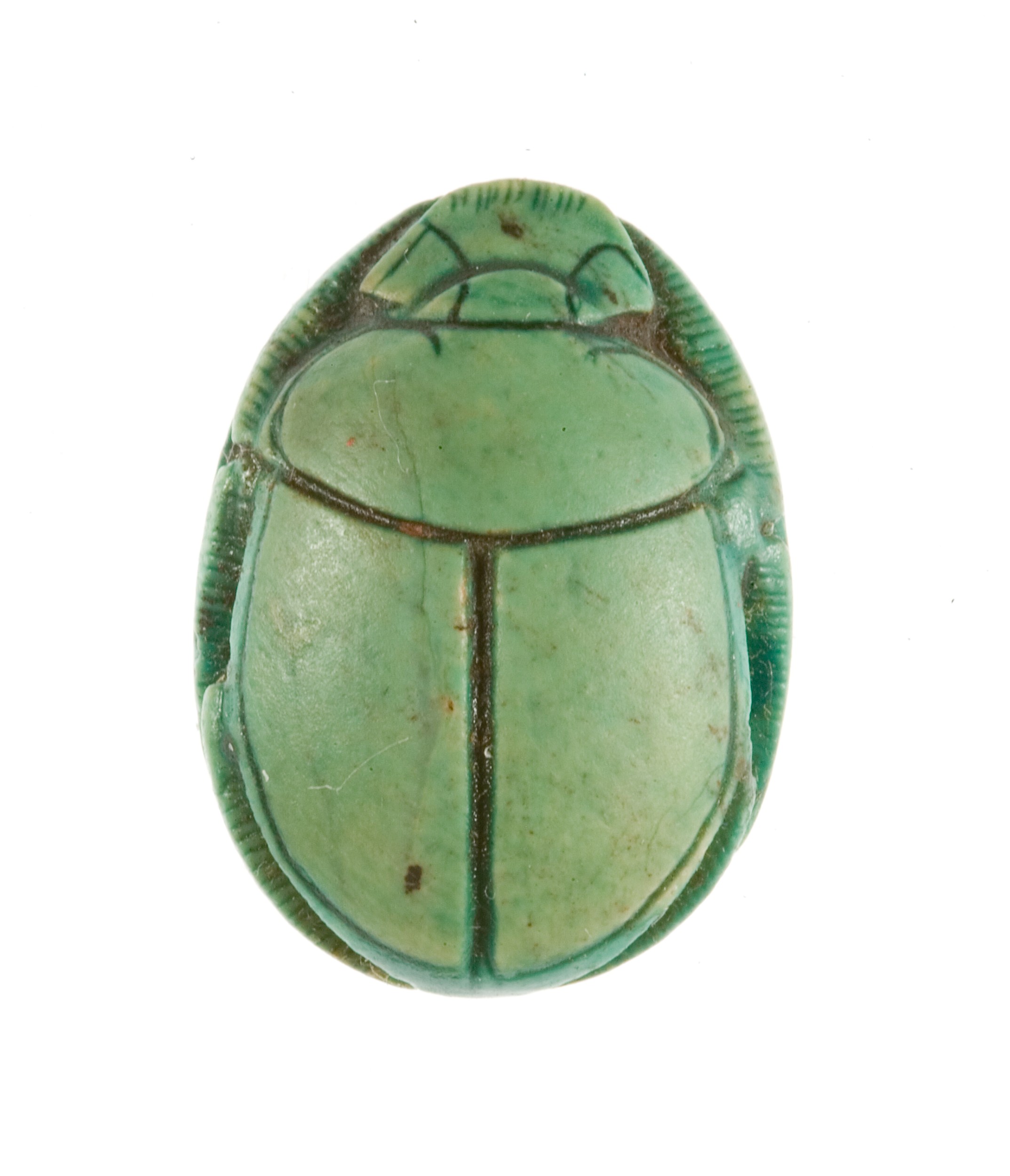Scarab Inscribed for Maatkare (Hatshepsut)
New Kingdom
During the 1926-1927 excavation season, the Museum's Egyptian Expedition uncovered three foundation deposits along the eastern enclosure wall of Hatshepsut's funerary temple at Deir el-Bahri in Western Thebes. Among the contents were 299 scarabs and stamp-seals. Sixty-five of these are now in the Egyptian Museum, Cairo, and the rest were acquired by the Museum in the division of finds.
Among the inscriptions on the bases of these scarabs and seals are examples of every title Hatshepsut held, from the time she was "king's daughter" during the reign of her father, Thutmose I; through the time she was queen of her half-brother, Thutmose II; and during her regency and co-reign with her nephew/step-son, Thutmose III.
The inscription on the base of this scarab records Hatshepsut's throne name, Maatkare, enclosed in a cartouche embellished with the wings and legs of a bird, and topped with the feathers and horns of the divine atef-crown. the bird talons cluch shen hieroglyphs (eternity, protection). Beneath the cartouche is the hieroglyph representing gold. The name Maatkare may be roughly translated as Maat (the goddess of truth) is the life force of Re (the sun god).
Due to rights restrictions, this image cannot be enlarged, viewed at full screen, or downloaded.
This artwork is meant to be viewed from right to left. Scroll left to view more.




